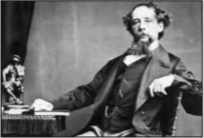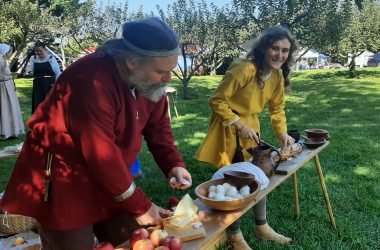by Crystal Schelle
There was something about the mountains and breathtaking beauty of Norway that spoke to the soul of Pittsburgh-born artist William H. Singer, Jr.
Washington County Museum of Fine Arts’ latest exhibition, “Landscapes and Legends of Norway: William H. Singer & His Contemporaries,” celebrates Singer’s longtime love affair with the Nordic country. The exhibition runs May 27-September 17.
Before Singer and his wife, Hagerstown native Anna Brugh-Singer, founded the Washington County Museum of Fine Arts in 1931, they had already made Norway their home.
Selected from the museum’s permanent collection, “Landscapes and Legends” captures the spirit and magnificence of Norway’s natural beauty.
The exhibition includes paintings, drawings, and prints of Norwegian landscapes, myths, and people by Singer as well as his contemporaries, like Jacob Dooijewaard, Frank Morse-Rummel, and Martin Borgord.
“Landscapes & Legends” explores how these artists responded to nature and Norwegian culture in different ways.
“We’re having fun with this show,” said Sarah Hall, museum director. “Singer’s Norwegian landscapes are delightful, and the Norse legends explored in the work of Frank Morse-Rummel are inspiring our upcoming Viking Day as well as our Little Vikings-themed summer camp.
“This is an opportunity for us to share more of our founder’s story as well as to bring out some works that aren’t frequently on view because of fragility — Singer’s pastels are extremely delicate and sensitive to vibration, so we limit both handling and light exposure. Watercolors like Morse-Rummel’s are light sensitive and the rule of thumb is to display them a maximum of 25% of the time,” she added.
This exhibition places the artists in their broad cultural and historical context by displaying archival materials, including catalogues, letters, newspaper articles, and photographs. Visitors will have the special opportunity to view some of William Singer’s delicately rendered and seldom-seen pastels.
Who was William Singer?
Born in 1868 to a prominent Pittsburgh steel family, Singer had an early interest in art and dreamt of becoming a painter. His father was a “Sunday painter,” and his grandfather George Singer was a painter and gilder of chairs in Greensburg, Pennsylvania. Although William Singer Sr. wanted his son to follow him into the steel industry, his mother, Hester Harton Singer, encouraged his artistic pursuits.
William, Jr. eventually worked in the family business for 11 years. When he met Norwegian artist Martin Borgord, who was living in Pittsburgh, it reawakened his love of painting. Singer split his time between work and studying with Borgord. It was under Borgord’s tutelage that Singer began painting landscapes. In 1895, Singer married Anna Brough, and five years later, he left the family business to focus on his art.
Singer and Norway
After spending a year painting in Maine, he and his new bride sailed to Europe where he studied for several months at the Academie Julian in Paris. They moved to Laren, Holland, not far from Amsterdam, where a regional school of artists flourished. It was Borgord who suggested they move to Norway.
During World War I, the couple began spending summers on the west coast of Norway and settled near the village of Olden on the Nordfjord, north of Bergen.
While living in Olden, Singer captured the spirit and magnificence of this land’s natural beauty in different seasons and moods in his Impressionist canvases, beautifully rendered in his Pointillist technique (characterized by dotted brushstrokes and stippled coloration).

Norway spoke to Singer like no other place. He captured the soaring mountains, the tall and stately Norwegian pines, the babbling brooks, and the peaceful Norwegian winters.
Among the exhibition’s highlights is Singer’s “Our River in Summer” (1924), a majestic view in which the water in the foreground rushes towards the viewer, transporting us to this cool, refreshing mountainside. Like many of the painter’s other canvases, this work conveys a mood of contemplation and reverie, and captures an ephemeral moment or impression derived from nature.
The exhibition also features a selection of Singer’s delicately rendered and seldom seen pastels as well as Morse-Rummel’s imaginative watercolors of Norse legends.
Paintings such as “The Battle Between the Ases and the Wanes (Æsir and the Vanir)” make extensive use of free-flowing brush strokes and broad swaths of color that seamlessly merge figures and landscape in evocative, ethereal settings.

For example, Morse-Rummel represented a single deity (likely Odin, ruler god of death, wisdom, and poetry) grasping a spear and swirling through the air as he looks down at the barren earth. In Norse mythology, this battle was a significant conflict between two groups of gods (the Æsir and the Vanir) that ultimately resulted in their unification into a single pantheon.
The Singer’s enjoyed the Nordic lifestyle and built a stately mansion in Olden. They shared their wealth with the people of the fishing village. They remained there through World War II, and when the Nazis invaded Olden, its townspeople protected the Singers.
Unfortunately, William Singer did not live to see a Nazi-free Norway. He died of a heart attack in 1943, two years before Norway was liberated by the Allied forces.
“Landscapes and Legends of Norway: William Singer & His Contemporaries” is organized by the Washington County Museum of Fine Arts from its permanent collection. Generous support for this exhibition has been provided by James & Melinda Marsden and Paul & Lotta Mellott.
The following is a list of programming associated with Legends and Landscapes. To register for any event, contact Donna Rastelli at 301-739-5727 or [email protected]. For more information on any event go to wcmfa.org.
Free events
Saturday, June 10, 11 a.m. to 3 p.m. Viking Day. Community celebration features drop-in art activities for kids, live music and axe throwing. Free.
Thursday, June 29, 6 p.m. online. Let’s Talk Art. Director Sarah Hall and Agnita M. Stine Schreiber Curator Daniel Fulco are joined by special guest Heather Semple, owner of ECI Art & Travel to discuss “Landscapes & Legends of Norway: William Henry Singer & His Contemporaries.” Heather is related to William Henry Singer and will join us to discuss the Singer family history and his artistic legacy. Free. Register in advance for link.
About the museum
Located in City Park, Hagerstown, Maryland, the Washington County Museum of Fine Arts was founded in 1931, the legacy of Hagerstown native Anna Brugh Singer and her husband, Pittsburgh-born artist William Henry Singer, Jr. Featuring a collection of more than 6,500 objects, the Museum has important holdings of American painting, Old Masters, decorative arts, and sculpture. The museum schedules a program of exhibitions, lectures, concerts, tours, and talks featuring national and international artists, as well as a yearly showcase of the art of students in Washington County Public Schools. Its free youth art education programs have served four generations of local families.
The museum is located at 401 Museum Drive, Hagerstown. Free parking is available adjacent to the Museum. Hours are 10 a.m.–5 p.m., Tuesday – Friday; 10 a.m. – 4 p.m. Saturday; 1 to 5 p.m. Sunday; the museum is closed Mondays and major holidays.




